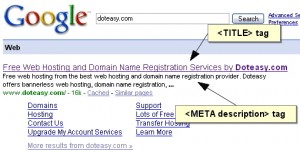
If your sales organization spent more time selling, how would that affect your sales revenue numbers? Often, salespeople and front-line managers get bogged down in forecasts, reviews, hiring and recruiting. In fact McKinsey Global reports that salespeople spend less than half their day selling. (This infographic provides a good summary).
One of the most common sales challenges for leaders is ensuring that their sales team is spending their time where they should be — building and converting pipeline into deals. Here are four ways you can keep your sales team focused on selling.
1. Provide Sales Consumable Information
If your team has to spend an unreasonable amount of time thumbing through stacks of sales scripts and spreadsheets in order to track and measure results every step of the way, you’re only helping one side of the sales equation.
The other side of the equation is making it easy for them to do their job. This means providing them with sales consumable information that they can access and execute with their prospects and customers. The tools they use in their sales planning and execution processes should be practical and repeatable. If you don’t have a mechanism that enables your sales team to drive efficient pipeline, forecast accurately and effectively move opportunities through the sales process, you can guarantee your team will spend more time with organizational logistics than with their opportunities and customers.
2. Provide Your Frontline Managers With Streamlined Processes
By helping your front-line managers execute their job efficiently, you free them up to spend more of their time coaching their sellers to sell.
Provide your frontline managers with a structured Management Operating Rhythm® in order to keep them focused on specific high-level sales activities. Think of the Management Operating Rhythm as a sales cadence – an intentionally repeatable process to guide their strategy and execution.
When built around consistent messaging and goals, a solid operating rhythm allows your front-line managers and sellers to begin speaking the same language and helps everyone get clear on the benchmarks needed to be successful. The result is that your managers are less burdened and your sellers have space to be coached to success.
3. Provide Structured Feedback
Having a structured feedback and review process is essential to the growth and success of your sales team. It builds a relationship of trust between your managers and sellers, and it allows you to measure whether or not your desired best practices are being executed. Putting a process around giving feedback helps ensure your salespeople continue to focus on the key activities that drive sales.
Give productive feedback by starting out with the positive. Offer your sellers some insight into the things they’re doing right. A little positive reinforcement goes a long way to shaping the right kind of behaviors.
Then, ask your seller what he/she thinks. You can ask questions about a specific sale, project, or even general work situations. Provide the opportunity for them too voice their opinions on how they view their progress.
Next, it’s time for you to provide them with feedback. Make sure that the feedback is specific, measurable, achievable, realistic, and timely. General feedback is difficult for people to put into action. So if you want actionable results, you have to provide actionable feedback.
Finally, make sure that you’re modeling the right way of doing things at the leadership level. Sellers will try to emulate leadership, even if they aren’t aware of it. If you’re not modeling the right kind of behavior, you likely won’t receive the right kind of behavior.
4. Provide Them With The “How”
Good sales leaders clearly tell their sellers what result they should aim to achieve. Great sales leaders show them how to get there.
It’s great to be able to stand up in a sales training and inspire your sellers to hit the next quota in record time. But unless you can provide them with an actionable process to make that happen, you’re setting them up for failure. As a sales leader, your job is to ensure that you help your sellers achieve the results you ask for.
Similarly, it’s important that you have a reason for every result you ask them to achieve. Countless sales leaders ask for reports and forecast reviews and never put them to use. This often happens simply because “it’s just the way we’ve always done it.”
If you ask your sales managers for a report, let them know why it’s important and how you plan to use it. If you ask your sellers to hit a certain quota, let them know how the number serves the overall business goals, and that it’s not just an arbitrary number.
Your sales team will surprise and delight you when you clearly define what is required of them, why it’s important, and give them the tools to do their job the right way.
Business Articles | Business 2 Community
(401)
Report Post








